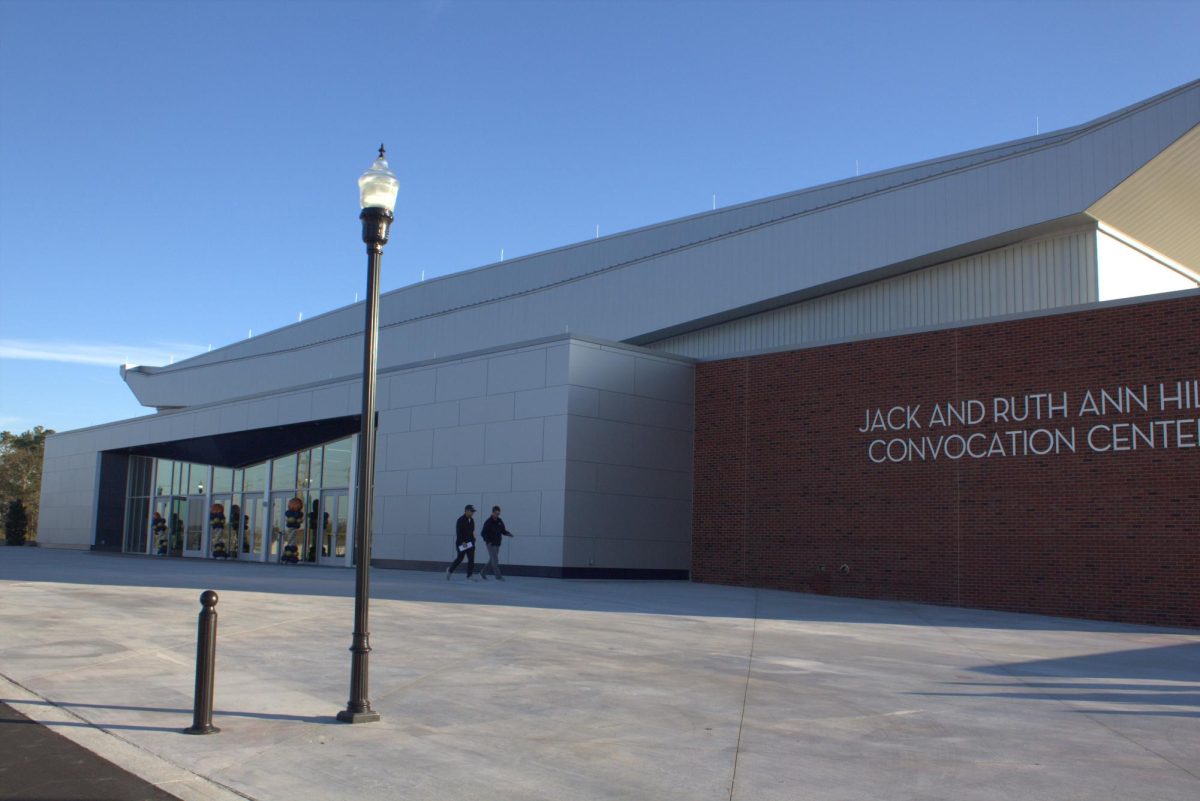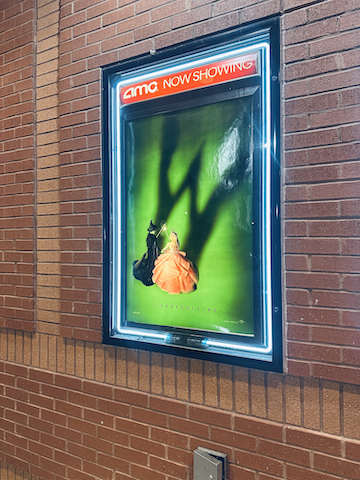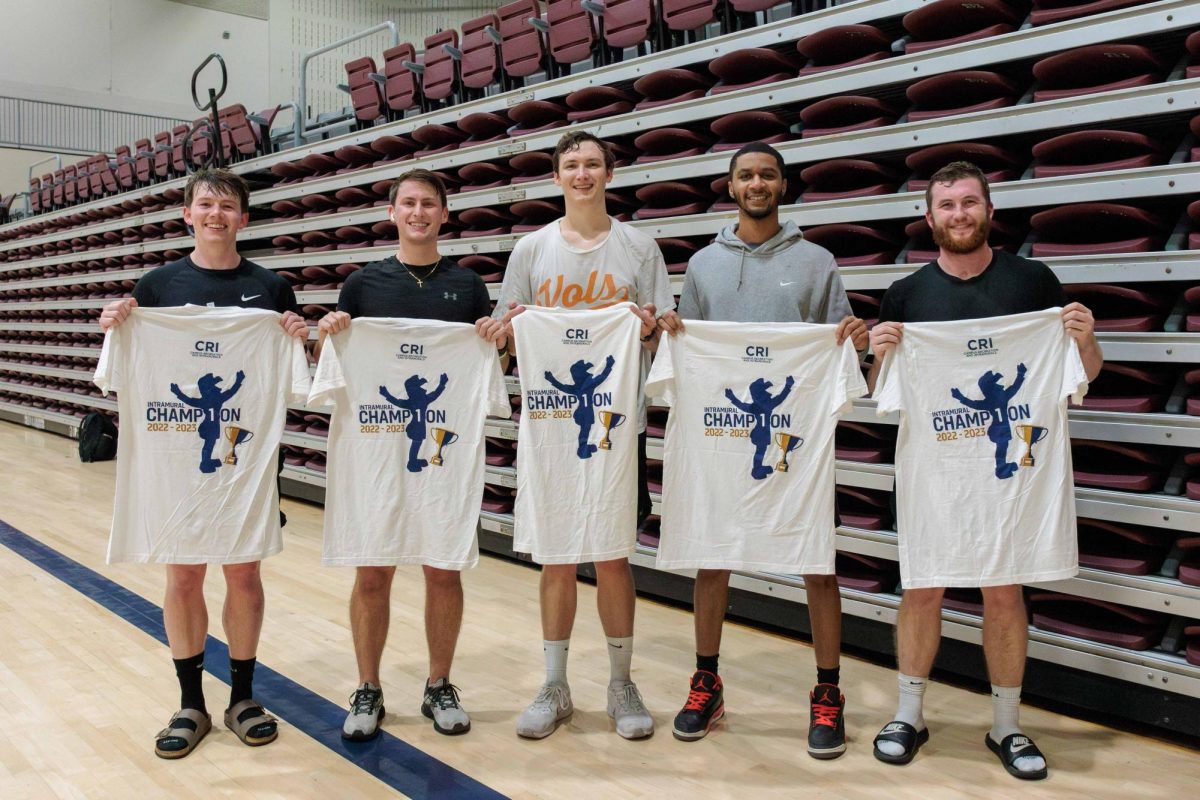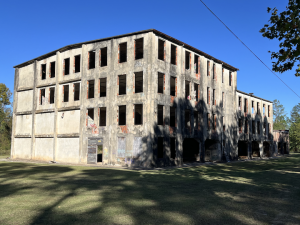‘Three Campuses One Heartbeat’ study finds that Georgia Southern is lacking in diversity and inclusion
September 26, 2019
STATESBORO — A study commissioned in the fall of 2018 from the Center for Strategic Diversity Leadership and Social Innovation found that students at Georgia Southern University’s campuses were lacking general satisfaction, a feeling of value and belonging and an institutional commitment to diversity.
The study was conducted by a team of seven researchers led by Damon A. Williams, Ph.D., with the goal of measuring students’ experiences of diversity and inclusion.
“This report provides insights and recommendations to empower Georgia Southern to step forward as a cohesive GSU community and enter the national dialogue on promising the best practices,” the report says.
Williams and his team sought to answer four questions:
-
What is the lived experience of diverse groups at Georgia Southern University?
-
What are the key challenges and opportunities of diversity, equity and inclusion at Georgia Southern?
-
What are the organizational diversity capabilities of the university and how can they be strengthened?
-
What are the most important recommendations to help Georgia Southern University move forward to support inclusive excellence?
Three campus survey
The first was a campus climate pulse survey, which surveyed a total of 5,063 students across all three campuses with both closed and open-ended questions about the three dimensions: general satisfaction, feeling valued and belonging and institutional commitment to diversity. Overall, 64% of respondents felt satisfied with the climate, 46% felt valued and belonged and 58% felt that GS had an institutional commitment to diversity and inclusion.
“The very presence of individuals from different backgrounds results in diversity,” the report reads. “Climate, on the other hand, refers to the experience of those diverse individuals and groups on a campus—and the extent and quality of the interactions among those various groups and individuals.”
According to the survey, overall, Liberty had the most positive responses to the campus climate and Armstrong had the least positive responses to the campus climate, with Statesboro falling in the middle.
Listening sessions
The second data selection method was the Campus Listening Sessions and Interviews with 250 participants.
The study asked open-ended questions designed to look into climate and take recommendations for change from those on the ground.
The study had three variables: Diversity and inclusion strengths at GS, diversity and inclusion challenges at GS and areas to improve diversity and inclusion at GS.
The listening sessions found that disengagement with diversity, equity and inclusion efforts was a common theme, as well as a feeling that employees were fighting for their jobs.
“The narrative that employees from both campuses, Armstrong and Statesboro, were put into a room and told to figure out who will keep their jobs was pervasive throughout our listening sessions,” the survey reads.
Community forums
The third survey method was campus-wide community forums involving more than 500 participants by selecting identity groups and leadership communities that provided a depth of understanding of key diversity leadership strengths, weaknesses and issues active on the GS campus.
An Organizational Diversity Audit
An Organizational Diversity Audit assessed the diversity infrastructure including plans, policies, committees, point leadership, spaces for shared dialogue and a consistent review of what is happening at peer, competitor and aspirant institutions.
Campus leaders were asked the following questions:
• Does your unit have a diversity and inclusion strategic plan?
• Does your unit have a dedicated point leader (e.g., an associate dean for diversity, a director of inclusion, an assistant dean for inclusive excellence, etc.) who is focused on issues of diversity and inclusion as a strategic priority?
• Does your unit have a diversity and inclusion committee, task force or working group focused on these matters as a strategic priority?
• Does your unit have any discretionary resources (e.g., internal grant, diversity and inclusion grant program, funding for a new diversity course, etc.) that members of your community can tap into to drive diversity and inclusion efforts?
• Does your unit annually prepare a diversity and inclusion report to track and monitor progress?
• Is diversity and inclusion engagement included as a part of your unit’s annual employee performance review for merit, promotion and advancement?
The results were broken down into several different categories including gender identity, sexuality and race.
Gender Identity
Along gender identity lines, men had significantly more positive experiences compared to all other gender groups, with 67% saying they were satisfied with the overall climate, 48% said they felt valued and belonging, the highest of the respondents and 63% said they felt a committment to diversity and inclusion, while gender nonconforming community members reported the most challenging experiences according to the study.
The study found several patterns regarding gender demographics.
“In professional environments, women often experience discrimination as an extensive source of stress, far more than men,” the survey reads. “And because of persistent stereotypes against women and their trailblazing status in certain fields and roles, they also feel a need to work harder than their male peers to be perceived as legitimate professionals.”
The study found that 63% of women felt satisfied with the climate, 45% felt valued and belonging and 56% felt an institutional commitment to diversity and inclusion.
112 respondents identified as gender non-conforming. Out of this demographic, 45% felt satisfied with the climate, 35% felt valued and belonging and 40% felt a commitment to diversity and inclusion.
The study found through open-ended survey comments that gender non-conforming students reported such experiences as being called slurs on campus, having been misgendered over and over again and wondering if there is a place for them at GS.
Sexuality
Along lines of sexuality and sexual identity, heterosexuals had more positive responses than among members of the LGBTQIA community.
• Heterosexual respondents rated satisfaction with climate significantly higher (65%) than LGBTQIA respondents (56%).
• Heterosexual respondents rated value and belonging significantly higher (48%) than LGBTQIA respondents
(36%), although both scores are very low.
• Heterosexual respondents rated institutional commitment significantly higher (60%) than LGBTQIA respondents (47 %).
The study says that an LGBTQIA Center to support LGBTQIA students would be a good solution.
“Consider the development of an LGBTQIA Center, to provide dedicated support for this campus community and their allies,” the study reads.
Racially
The study found that along racial lines, minority students are having different and sometimes more negative experiences on campus.
-
Among Whites, 70% felt satisfied with the climate, 53% felt valued and belonged and 65% felt there was an institutional commitment to diversity and inclusion.
-
Among Asian American/Asian students 69% felt satisfied with the climate, 52% felt valued and belonging and 67% felt there was an institutional commitment to diversity and inclusion
-
Among Hispanic/Latino respondents 73% said they felt satisfied with the climate 46% felt valued and belonging and 57% felt that there was an institutional commitment to diversity and inclusion
-
Among Black respondents 60% felt satisfied with the overall climate, 39% felt that valued and belonging and 46% felt there was an institutional commitment to diversity and inclusion
-
Among Multi-Racial/Ethnic respondents 61% felt satisfied with the overall climate, 47% felt that valued and belonging and 55% felt there was an institutional commitment to diversity and inclusion.
The study said that the Statesboro community as a whole might have something to do with faculty and staff of color leaving.
“Many in the listening sessions argued that Georgia Southern experiences challenges around recruiting and retaining faculty of color, in part because of these broader socio-geographic dynamics,” the study said. “Participants argued that “Confederate flags” and “community racism” have real-life consequences on potential faculty and staff choosing to not take employment or leaving shortly after being employed.”
Another reason for some of the negative results were cultural flashpoints over the last three years, especially on the Statesboro campus.
“Members consistently mentioned diversity flashpoints like the “triggerish” student-athlete incident and the classroom use of the “n” word by a respected faculty member and others as having a devastating effect on perceptions of the campus climate institutionally,” the survey reads.
Carl Reiber,Ph.D., Provost of GS said in an interview with The George-Anne: Inkwell Edition that the triggerish student’s comments were stupid, but that the First Amendment limited the University’s ability to punish the student.
“We can all agree it was stupid, it was bad. It showed ignorance on the part of the student,” Reiber said. “But the problem was that it fell under First Amendment free speech.”
Reiber said that GS leadership went as far as the Georgia Attorney General, Christopher Carr, to try and expel the student at the behest of student groups.
“The student groups that I met with they wanted that person expelled,” Reiber said. “We just couldn’t do that and we checked all the way up to the state Attorney General and they said, no that is freedom of speech.”
Survey Participants said that the campus voice was too sterile in response to “triggerish”, with survey participants saying that they wanted a stronger reaction to these flashpoints.
Diversity Backlash
Williams found that all three campuses had a call for Strategic Diversity Leadership, Opportunities to Build Community and Diversity Backlash, specifically on the Statesboro campus, diversity backlash seemed to rise to the top.
“While the first two themes reveal that many believe in a deeper commitment to diversity and inclusion, there is a strong presence of pushback that must be acknowledged as part of the culture at Georgia Southern generally, and, in a more pointed fashion, at Statesboro,” the study reads.
According to the study, there were more than 200 backlash comments against diversity and inclusion as part of the open-ended aspect of the survey. The study notes that while none of them were violent, they could be considered inflammatory.
“Serious comments included calling for the building of walls, comparing diversity and
inclusion to a mental disorder,” the study reads. “And calling for a stop to any conversations—for racial and gender equality to be stamped from existence.”
Some of the respondent’s quotes that the study selected included:
-
“There is more to diversity than accommodating the weird outsider kids, the gender non-specific and non-whites. I feel like, Georgia Southern, what about my diversity as an adult.”
-
“I think it is a shame that being a white male at GSU has been degraded to a point that we are talked down to, set up as examples and generally treated as the ‘Bad Guys.”
-
“Accepting others is a very good practice and should be continued to be practiced like it is currently, but gender and sexual orientation is a bunch of bull.You are either man or woman and either like the opposite sex or the same or a combo of both. Recognizing yourself as a cat is very dumb and suggests some sort of mental illness.”
-
“Drop all the diversity horse manure and leftist politics, judge people based on the content of their character. Focus more on educating the individual rather than concerns with how we feel about ourselves.”
The study says that these comments come from an “us versus them” mentality.
“From this vantage, a focus on diversity is viewed as a zero-sum game of acquiring opportunity and intergroup conflict between those who are legitimate or meritocratic and those who are seeking opportunity through illegitimate means, based on group identity,” the survey reads.
“I think it’s important for everybody to be involved in the diversity and inclusion discussion it, but just because you’re involved doesn’t mean that we all agree,” Williams said. “Irrespective of what anyone’s perspective around these issues, I think everyone has a role to play. I personally am always championing a conversation.”
Recommendations
When Williams and his team were finished with data collection, they prescribed seven recommendations for GS.
-
A call for a new strategic diversity leadership framework. “Move fast and create vision and architecture for change that activates as part of your new strategic plan and demonstrates action to the campus community,” the report reads. This included strategies to execute this goal including developing a broad and inclusive definition of diversity, establish a vision for inclusive excellence as the overall leadership for your work, include a multidimensional framework for developing campus, diversity goals and a plan and include a scorecard tool to track progress.
-
Big steps must be taken in order to implement a clear vision for diversity within the campuses. “Put in place several big-picture initiatives that can spark real change over time,” the study reads. Some suggestions included training and professional development, intergroup dialogue program and cultural competence into the curriculum and co-curriculum.
-
The university must establish a diversity and inclusion role, titled “Associate Vice President for Inclusive Excellence”, that manages the Office of Inclusive Excellence. The AVP should not act so much as a figure head, but should support the efforts listed in the study and to establish a Strategic Diversity Leadership budget. The university needs to consider important background characteristics for the new AVP and that GS should consider developing a divisional portfolio for the new diversity office, according to the recommendation. The development of a diversity crisis advisory team would also encourage GS to further this initiative.
-
GS should strengthen the university’s diversity brand within diversity, equity and inclusion through strategies that focus on the positive narrative of diversity, with full transparency and authenticity. A more story-based communication approach is recommended rather than a crisis-response approach. The report also recommends that there should be a campaign around the narrative of inclusive excellence.
-
In order for GS to heal the pain of consolidation, create a new narrative and strategic plan, the university should elevate the strategic campus integration journey across the three campuses. Particularly at the Armstrong campus, senior leadership is advised to be engaged in conversation regarding Inclusive Excellence. It is also states in recommendation five that, “Leaders create forums for community members to discuss challenges and problem-solve.”
-
GS should develop a campus-wide lateral diversity infrastructure throughout all schools, colleges and divisional areas by activating, “a consistent and meaningful commitment to change.” This can be implemented through a campus diversity crisis advisory team, point leaders on campus, committees and alignment plans by school, college and division, and support in the offices of Development and Alumni Affairs.
-
Engage the campuses through developing a campus climate survey for winter 2019 in an effort to assess any change in the climate. It is recommended for GS to set up legacy measures with time-based indicators to monitor progress and implement survey integration into the campus activation strategy.
Conclusion
The study called in closing for campus leadership to build an inclusive campus and definition of diversity where all felt belonged.
“An essential next step will be to ensure that institutional leadership is aware of and committed to building an inclusive, supportive campus environment where every member of the faculty, staff and student body is valued and encouraged to reach their highest potential,” the study reads.
Williams left GS leadership with nine steps.
-
Staff from the Center for Strategic Diversity Leadership and Social Innovation will partner with GS to implement a two day Strategic Diversity Leadership Training Institute.
-
Distribute this report to inform the campus community by making the report fully available on the campus intranet.
-
Develop an activation plan that outlines the key elements of this report.
-
Discuss the report with senior leaders, and have them produce a one-page memo with steps in order to implement the recommendations given by the survey
-
Discuss the report with governance leaders and have them support implementing the recommendations
-
Develop and finalize your AVP-level CDO job description
-
Use any executive recruitment firm or internal strategy to hire a tier-one diversity officer.
-
Gather ideas to present to job candidates and ask them to provide guidance on how they would address and work to overcome some of the challenges noted in the study, such as consolidation, and achieving better accountability institutionally
-
Identify possibilities in terms of taking new action steps that move the university forward, and supporting the diversity officer.
An essential next step is to ensure that GS leadership is aware of these changes and are committed to creating an inclusive, supportive campus environment where every person is valued and encouraged to reach their highest potential, the report concluded.
John Lester, Interim Vice President for Strategic Communications and Marketing, encourages the GS community to allow the university to build this environment.
“I think it has to be a show me, don’t tell me,” Lester told The Inkwell. “And you have to got to give the university a chance to show you.”
While culture change is difficult, clarity of focus and an articulated vision with frequent communication will lead to three inclusive campuses at GS, according to the report.
Madison Watkins contributed to this article
Sarah Smith, The George-Anne News Editor, gaeditor@georgiasouthern.edu
Nathan Woodruff, The George-Anne Managing News Editor, gaeditor@georgiasouthern.edu
The full report can be found above.








